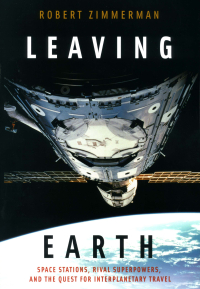Academic invents new non-oppressive physics to protect minorities
This paper is not a prank: A feminist gender studies academic from the University of Arizona has invented a theory of “intersectional quantum physics” to fight the oppression of Newtonian physics.
Whitney Stark argues in support of “combining intersectionality and quantum physics” to better understand “marginalized people” and to create “safer spaces” for them, in the latest issue of The Minnesota Review. Because traditional quantum physics theory has influenced humanity’s understanding of the world, it has also helped lend credence to the ongoing regime of racism, sexism and classism that hurts minorities, Stark writes in “Assembled Bodies: Reconfiguring Quantum Identities.”
What is also important is that this college researcher, who also has an appointment in the culture and gender studies department at Utrecht University in the Netherlands, got her paper published in a journal published by Duke University Press. Below is her full abstract. I dare you to tell me what it means.
In this semimanifesto, I approach how understandings of quantum physics and cyborgian bodies can (or always already do) ally with feminist anti-oppression practices long in use. The idea of the body (whether biological, social, or of work) is not stagnant, and new materialist feminisms help to recognize how multiple phenomena work together to behave in what can become legible at any given moment as a body. By utilizing the materiality of conceptions about connectivity often thought to be merely theoretical, by taking a critical look at the noncentralized and multiple movements of quantum physics, and by dehierarchizing the necessity of linear bodies through time, it becomes possible to reconfigure structures of value, longevity, and subjectivity in ways explicitly aligned with anti-oppression practices and identity politics. Combining intersectionality and quantum physics can provide for differing perspectives on organizing practices long used by marginalized people, for enabling apparatuses that allow for new possibilities of safer spaces, and for practices of accountability.
I also dare you to build a rocket using this new physics. I also wonder if anyone can tell the difference between this legitimate paper and this fake one.
This paper is not a prank: A feminist gender studies academic from the University of Arizona has invented a theory of “intersectional quantum physics” to fight the oppression of Newtonian physics.
Whitney Stark argues in support of “combining intersectionality and quantum physics” to better understand “marginalized people” and to create “safer spaces” for them, in the latest issue of The Minnesota Review. Because traditional quantum physics theory has influenced humanity’s understanding of the world, it has also helped lend credence to the ongoing regime of racism, sexism and classism that hurts minorities, Stark writes in “Assembled Bodies: Reconfiguring Quantum Identities.”
What is also important is that this college researcher, who also has an appointment in the culture and gender studies department at Utrecht University in the Netherlands, got her paper published in a journal published by Duke University Press. Below is her full abstract. I dare you to tell me what it means.
In this semimanifesto, I approach how understandings of quantum physics and cyborgian bodies can (or always already do) ally with feminist anti-oppression practices long in use. The idea of the body (whether biological, social, or of work) is not stagnant, and new materialist feminisms help to recognize how multiple phenomena work together to behave in what can become legible at any given moment as a body. By utilizing the materiality of conceptions about connectivity often thought to be merely theoretical, by taking a critical look at the noncentralized and multiple movements of quantum physics, and by dehierarchizing the necessity of linear bodies through time, it becomes possible to reconfigure structures of value, longevity, and subjectivity in ways explicitly aligned with anti-oppression practices and identity politics. Combining intersectionality and quantum physics can provide for differing perspectives on organizing practices long used by marginalized people, for enabling apparatuses that allow for new possibilities of safer spaces, and for practices of accountability.
I also dare you to build a rocket using this new physics. I also wonder if anyone can tell the difference between this legitimate paper and this fake one.





